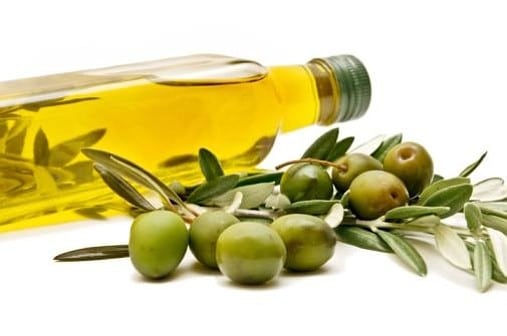Use olive oil instead of butter for heart health
What’s not to love about olive oil? It tastes good and it’s packed with phenolics (plant-based compounds with anti-clotting, anti-inflammatory and antioxidant properties) and monounsaturated fat. This rock star superfood is an essential part of the Mediterranean diet, which is linked to better heart health.
Just two tablespoons of olive oil a day may lower your cholesterol levels and keep your arteries clear. “And some research,” says Donald Hensrud, M.D., of the Cleveland Clinic, “shows that monounsaturated fats may also benefit insulin levels and blood sugar control, which can be especially helpful if you have type 2 diabetes.” Diabetes is another risk factor for heart disease.
Know Your Olive Oils
Pure olive oil. This is the commercial olive oil used for all-purpose cooking. It is the blandest tasting of the all of the olives, and it has the lowest nutrient level.
Light olive oil. A chemically refined mixture of lower-quality oils and virgin oil, light olive oil is great for baked goods.
Virgin olive oil. Made from slightly riper olives, virgin olive oil is a little bit more acidic than the extra-virgin kind (it costs a little less, too), but is still flavorful. It’s best for sautéeing meat and vegetables.
Extra-virgin olive oil. From the first pressing of olives, extra-virgin olive oil is the highest quality. This is best used in salad dressings and marinades, not for cooking, which could damage the superior flavor and the nutrients in the oil.
Substituting Olive Oil for Butter
Use this chart to convert the quantity of butter called for in a recipe to the required quantity of olive oil.
Butter vs. Olive Oil
1 teaspoon = 3/4 teaspoon
2 teaspoons = 1-1/2 teaspoons
1 tablespoon = 2-1/4 teaspoons
2 tablespoons = 1-1/2 tablespoons
1/4 cup = 3 tablespoons
1/3 cup = 1/4 cup
1/2 cup = 1/4 cup and 2 tablespoons
2/3 cup = 1/2 cup
3/4 cup = 1/2 cup and 1 tablespoon
1 cup = 3/4 cup
Note: Store your olive oil in a cool, dark place. Make sure your container is made of tinted glass, porcelain or stainless steel (oil can absorb PCVs from plastic containers) and has a tight cap.






